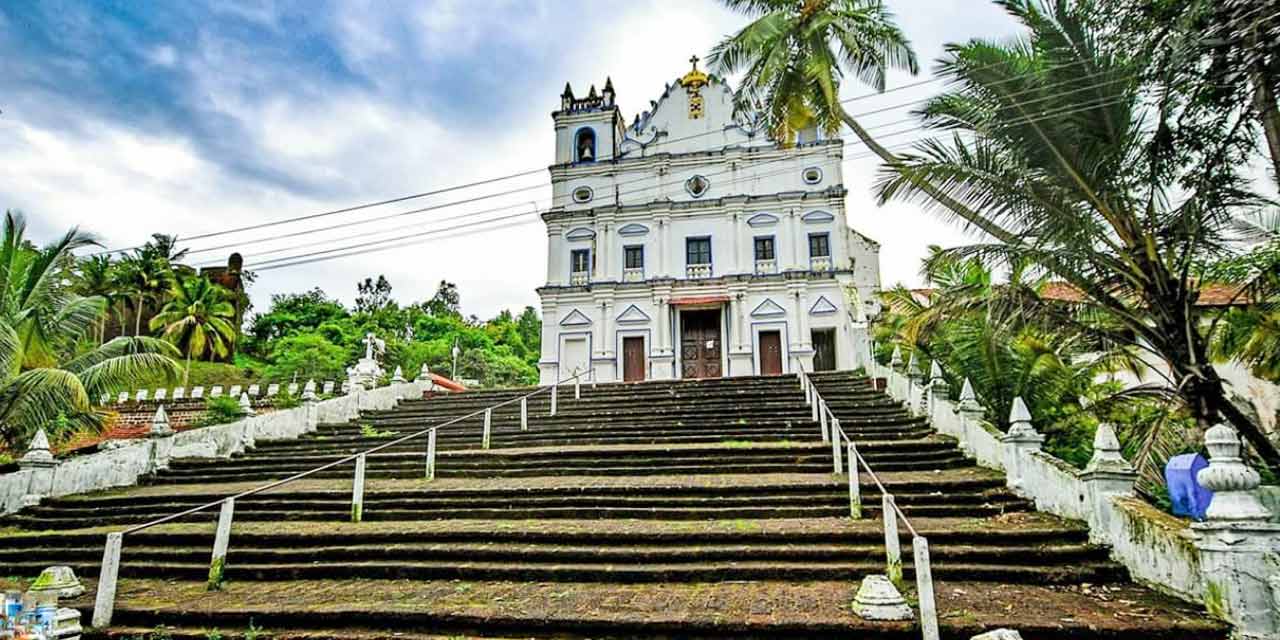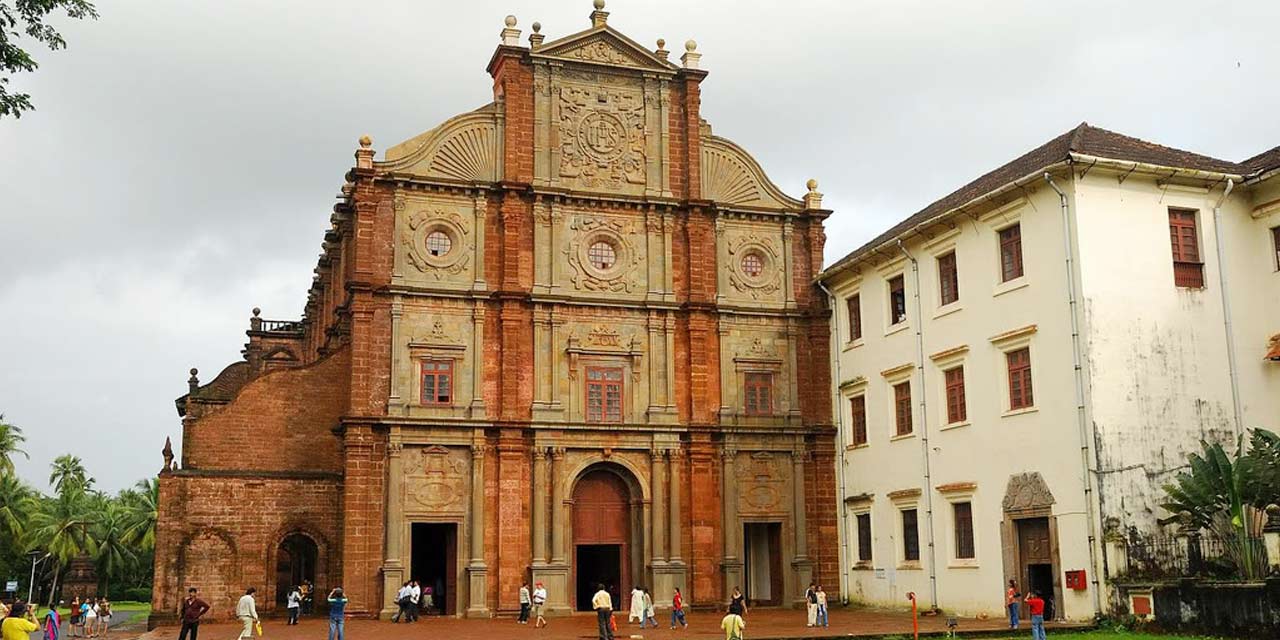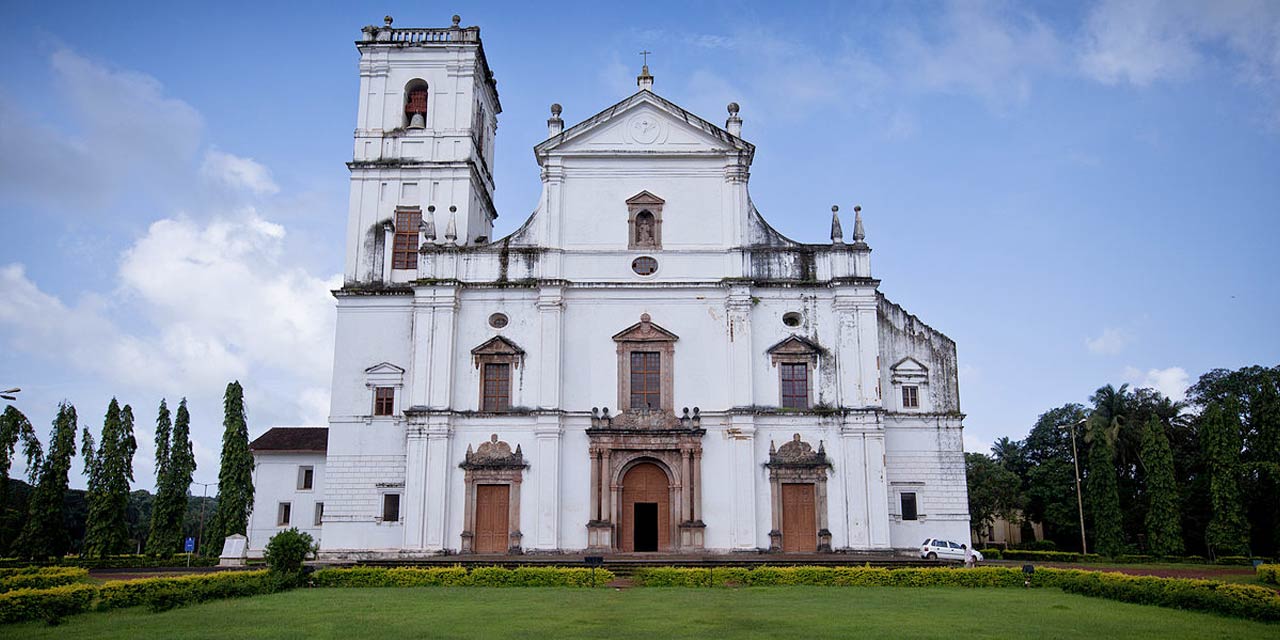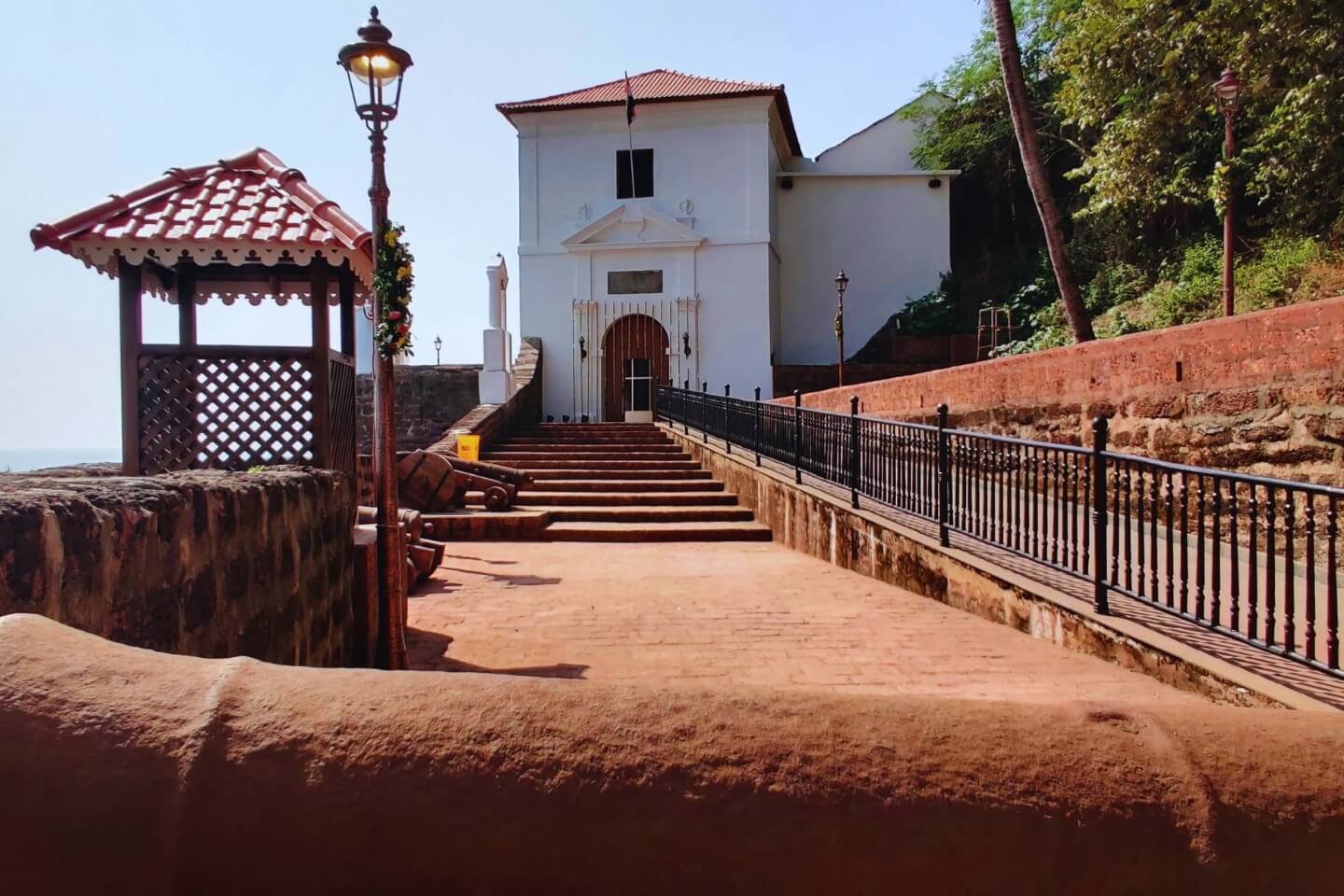Goa, being the smallest state in India, is known for its endless beaches, delicious seafood, and electrifying nightlife. Old Goa, on the other hand, has much more to offer with its rich cultural, religious, and historical past. The place is a perfect blend of modern and ancient architecture, and it offers something for every kind of tourist.
You can start your trip in Old Goa by visiting some of its iconic landmarks like grand basilicas, tombs, and churches. The Se Cathedral, Basilica of Bom Jesus, and the Church of St. Francis of Assisi are some of the most popular churches in Old Goa and are listed as UNESCO World Heritage sites.
Apart from churches, you can visit the Archaeological Museum of Goa and immerse yourself in the state’s history and culture. You can also explore the beautiful Fort Aguada, which offers breathtaking views of the Arabian Sea.
Old Goa is a place that will leave you spellbound with its charm and beauty. It is a perfect blend of modern and ancient architecture, and it offers something for every kind of tourist. So, pack your bags and head to Old Goa for an exhilarating vacation experience!
1. Divar Island
If you're looking for a break from the hustle and bustle of Goa, look no further than Divar Island. This serene island on the Mandovi River is a hidden gem that offers a peaceful and tranquil escape from the noisy and crowded city life. To reach this quaint little island, you need to take a ferry from the Viceroy's Arch in Old Goa, cross the deep blue waters of the Mandovi River, and you will find yourself in a world of natural beauty, serenity, and tranquility.
Divar Island is not your typical tourist destination. The island is not very popular among tourists, and it remains unexplored and unexploited by tourism or commercialization, making it a perfect place for those who want to enjoy a day away from the city's chaos. The island is synonymous with natural beauty, and it's no wonder why it is commonly recognized as a "village stuck in time."
The island is dotted with vintage houses built in Portuguese style, traditional churches, and surrounded by evergreen paddy fields. Unlike the loud and hippie party culture of Goa, this place provides a contrasting peace and environment to the wanderers to make them want just to explore it. The term ‘divar’ is derived from the word ‘dipavati,’ which means ‘small island’ in Konkani.
Divar Island has three villages, namely Piedade, Sao Matia, and Naroa. Among these villages, the scenic Piedade village is the most popular destination for those visiting the island. This village is a replica of a typical Goan village at the time of the Portuguese. The village is beautiful, and you can spot well-kept houses throughout the hamlet. You can also visit the ruins of the Kadamba dynasty in the village of Piedade and the 'Church of Our Lady of Compassion.'
If you're planning to visit Divar Island, keep in mind that the island can only be reached by ferry services. However, Goa is well-connected to major cities like Mumbai, Delhi, and Bangalore, so getting there won't be a problem. So, pack your bags and take a ferry to Divar Island to experience a world of natural beauty, serenity, and tranquility away from the hustle and bustle of city life.
- Timings: 12:00 AM – 12:00 AM
- Entry Fee: Free
2. Reis Magos Fort

Reis Magos Fort is an awe-inspiring fort located in Old Goa on the banks of River Bardez, overlooking the beautiful city of Panjim. The fort is the oldest in Goa and served as the Portuguese's first line of defense against invaders. The fort's strategic location and high walls made it an impregnable fortress and a valuable asset for the Portuguese colonists.
Over time, the fort was converted into a jail and then a hospital. Unfortunately, it was left in ruins and neglected. However, after extensive restoration work, the fort was finally opened to the public in 2012. Today, the majestic fort with its reddish walls is visible from far away.
The Reis Magos Fort is a listed monument under the Goa Ancient Monuments and Archaeological Sites and Remains Act. The fort regularly hosts exhibitions, displays, performances, fairs, festivals, and educational events to promote Goa's rich cultural heritage.
The fort has four galleries - Freedom Fighter's Gallery, Art Gallery, History & Restoration Hall, and Gunloops. The fort's architecture is a unique blend of Portuguese and Indian architectural styles, making it a beautiful and rare historical site.
The fort's height offers a stunning panoramic view of the surrounding area. You can explore the fort's underground tunnels and chambers, which have remained intact over the years. The fort's bright reddish laterite stone walls and tall minarets are characteristic of Portuguese fort architecture and make it a timeless beauty.
A trip to the Reis Magos Fort is not complete without visiting the nearby Reis Magos Church, which is another popular tourist destination in Goa. If you're in Goa, visit this fascinating fort and witness the rich history and culture it embodies.
- Timings: 9:30 AM – 5:00 PM
- Entry Fee: ₹50 (Adult), ₹25 (Students)
3. Tomb of St. Francis Xavier
Have you heard about the Tomb of St. Francis Xavier in Old Goa? It's an incredible place to visit if you're interested in history and religion. The tomb is located within the Basilica of Bom Jesus, one of the most famous churches in Goa. St. Francis Xavier was a Portuguese evangelist who played a significant role in spreading Christianity in the region. He's believed to have converted thousands of people to Christianity during his stay in Goa.
The tomb is a beautiful piece of art, created by the renowned Italian sculptor, Giovanni Batista Foggini. It's made of Jasper and marble and has three layers: the base, mausoleum, and casket. The tomb is decorated with silver statues of the evangelist and bronze plates, along with large paintings that depict scenes from St. Xavier's life.
The saint's remains are publicly displayed once every ten years, making it a unique and special event for visitors to witness. The tomb is a sacred place and is revered by many as a symbol of Goa's rich cultural and religious history. It's a must-visit place if you're in Old Goa, and it's sure to leave you awe-inspired.
- Timings: 8:00 AM – 5:00 PM
- Entry Fee: Free
4. Bom Jesus Basilica

If you're planning a trip to Goa, make sure you don't miss out on the opportunity to visit the Basilica of Bom Jesus Church. This church is not only the oldest in Goa, but also one of a kind in India, with its stunning baroque architecture that will leave you in awe.
Built in 1594 and consecrated in 1605, the church has a rich history and cultural significance, being the site where St. Francis Xavier's remains are kept. The basilica has been declared a World Heritage Site by UNESCO, and rightly so, as it's a marvel of architecture and design.
The church's facade is particularly intriguing, with its triangular roofing delicately carved with the initials 'IHS', an abbreviation for the Jesuit emblem meaning 'Jesus, Saviour of Men'. Inside the church, the Mosaico-Corinthian style is inspired, and the floor is made of marble mosaic with precious stones, giving it a solemn appearance.
The church also houses an art gallery that is the largest of its kind in the continent, exhibiting Italian paintings from 1973 to 1976. The paintings, including 'The Last Judgment' and 'Genesis', are a must-see for art enthusiasts.
If you're interested in architecture and history, you'll appreciate the diverse architectural techniques used to construct the basilica. From black granite walls to basalt pillars and a sloping, tiled roof, this church is a fine example of Baroque architecture.
The Basilica of Bom Jesus Church is approximately 10 km away from Panjim, and you can hire a cab from top car rental companies in Goa or take your own bike to get there. The church is open to the public every day, and visiting it is a great way to immerse yourself in Goa's rich cultural and historical past.
- Timings: 9:00 AM – 5:00 PM
- Entry Fee: Free
5. Fontainhas
If you're looking for a break from the beaches of Goa and want to delve deeper into its culture and heritage, a walk through the quaint little quarter of Fontainhas is a must. Located in Panaji on the banks of Ourem Creek, Fontainhas gets its name from the natural springs nearby, one of which is called the “Fountain of Phoenix”.
This charming Latin Quarter is a heritage site and is known for its Portuguese-style houses, with colorful facades that will remind you of a colorful picture book. You can take a stroll down the winding streets, admiring the architecture and the freshly baked bread smell emanating from the bakeries along the way.
The quarter is also home to a bright red wishing well where you can take a short break before continuing on your way up to Altinho Hill. This magnificent structure houses the Chief Minister and Archbishop of Goa and offers a panoramic view of the surrounding area. Along the way, you can catch a glimpse of the 19th-century Chapel of St. Sebastian.
Walking through Fontainhas is not only enchanting and refreshing, but it's also a great way to learn more about Goa's rich cultural past. The quarter was laid out on a piece of land acquired by a Goan in the 18th century who had made a fortune in Mozambique. Today, it is recognized as a heritage site and is a reminder of the Portuguese influence on Goa's architecture and way of life.
So, if you want to experience the authentic charm of Goa, put on your walking shoes and take a stroll through Fontainhas. You won't regret it!
- Timings: 12:00 AM – 12:00 AM
- Entry Fee: Free
6. Se Cathedral

If you're a history buff or an architecture enthusiast, Se Cathedral in Old Goa is a must-visit destination. This iconic church is one of the largest in Asia and is dedicated to Saint Catherine. The cathedral is also an important center of the Latin Rite Roman Catholic Archdiocese of Goa and Daman.
Se Cathedral is famous for its Portuguese-Manueline architectural style and was built to mark the victory of the Portuguese army over a Muslim army, which led to the capture of Goa in 1510. The construction of Se Cathedral began in 1562 and was completed by 1619, but the main altars were only constructed in 1652, a hundred years after the construction first began. Se Cathedral was consecrated in 1640.
The interiors of Se Cathedral are breathtaking, with high ceilings, intricate mosaic work, and wooden carvings. The cathedral is richly decorated with gilded altars, paintings adorning the walls, numerous chapels, and statues. The cathedral is laid out in the standard cruciform shape and above the altar, visitors can admire gilded panels depicting scenes from Saint Catherine's life.
While the cathedral is a major tourist attraction, it is open to the public for only a few hours each day, so make sure to check the relevant timings before visiting. Don't miss out on the chance to visit this historic site and marvel at its incredible architecture and rich cultural heritage.
- Timings: 7:00 AM – 6:30 PM
- Entry Fee: Free
7. Church Of St Augustine

The Church Of St. Augustine in Old Goa may be in ruins now, but it is still a fascinating sight for those interested in archaeology and history. It is said to have been the largest church in Goa when it was built in the 17th century by the Augustinian friars, and even today, you can see the grandeur of the church in the St. Augustine Tower, which still stands tall.
The church complex included eight beautifully decorated chapels, numerous altars, and several chambers, all designed by an Italian architect. It was considered to be one of the three most famous examples of Iberian architecture in the world. But, due to decades of neglect and poor maintenance, the structure eventually fell into disrepair. By 1938, most of the building had collapsed, leaving only the high belfry tower standing.
Despite the ruins, the St. Augustine Tower is still an impressive sight, and visitors can get a sense of the church's former grandeur. Located near the Nunnery of Santa Monica in Old Goa, the church complex is a part of the World Heritage Site of Churches and Convents of Goa. It is definitely worth a visit for anyone interested in exploring the history and architecture of this fascinating region.
- Timings: 9:00 AM – 5:00 PM
- Entry Fee: Free
8. Wax World Museum
If you’re looking for a unique experience in Old Goa, the Wax World Museum is worth a visit. With over 30 life-size paraffin sculptures, it's one of India’s few large wax museums. You can see famous Indian personalities like Mahatma Gandhi and Mother Teresa, and even Jesus Christ’s “Last Supper” sculpture, which is the museum’s most famous attraction. The level of detail in the artwork is incredible, and it's sure to leave visitors captivated!
If you want to learn more about each sculpture, there are guided tours available in English and Hindi. The entry fee is reasonable and shouldn't be too much of a burden. However, do note that photography is strictly prohibited unless you make a camera pass beforehand at the museum’s counter. But don't worry, you can still pick up a small souvenir from the gift shop to remember your visit to the Wax World Museum.
Whether you’re interested in art, or history, or just want to experience something unique, the Wax World Museum is definitely worth a visit in Old Goa. The sculptures are so lifelike that you might even think they are real people! So, put this museum on your itinerary and enjoy an unforgettable experience.
- Timings: 9:30 AM – 6:30 PM
- Entry Fee: ₹30 per person
9. Chapel of Our Lady of the Mount
If you're looking for a stunning view and a glimpse into the rich history of Goa, then the Church Of Our Lady Of The Mount is a must-visit destination. Built in the 16th century, the church is situated atop a hill surrounded by lush vegetation. As you make your way to the top, you'll be rewarded with a breathtaking view of Old Goa, Divar Island, and the Mandovi River.
While the church is partly in ruins and closed for daily exploration, you can still attend an evening mass on the 8th of every month. The church is also open to the public during the Monte Music Festival and the Feast of St. Francis Xavier, both of which are celebrated with much fervor in Goa.
Visiting the Chapel of Our Lady of the Mount is not just a religious experience but also an exciting opportunity for a day out with your family or friends. The climb to the top of the hill is invigorating, and the panoramic view from the church is truly stunning. If you have time, you can also explore the nearby Church of St. Cajetan, which is another historical and religious landmark in Old Goa.
So, whether you're a history buff, a nature lover, or simply looking for a serene spot to soak in the beauty of Goa, the Church of Our Lady of the Mount is a perfect destination for you. Make sure to add it to your list of places to visit in Old Goa!
- Timings: 9:00 AM – 7:00 PM
- Entry Fee: Free
10. Archaeological Museum of Goa
The Archaeological Museum of Goa is a hidden gem in Old Goa that you wouldn't want to miss! It is a place where history buffs can explore artifacts and antiques dating back to prehistoric times and the Portuguese era in Goa. As you make your way to the museum, you'll notice that it was once an ancient Franciscan Monastery, which gives it an old-world charm.
The Archaeological Survey of India established the museum in 1964, but it was only recognized after 1984. The collection of antiques and artifacts is truly impressive, with a variety of items such as coins, statues, ivory and wood sculptures, paintings, portraits, maps, inscriptions, stonework, and ceramics, among others.
The best part about visiting this museum is that you get to experience Goa's rich cultural and historical past firsthand. You can see how the people of Goa lived during ancient times and get a glimpse of their way of life. The museum also gives you an idea of the influence of Portuguese culture on Goa.
For a nominal entrance fee, you can spend hours wandering through the exhibits and learning about the history of Goa. Whether you're a history enthusiast or just curious about the past, the Archaeological Museum of Goa is definitely worth a visit!
- Timings: 9:45 AM – 1:15 PM, 2:00 PM – 5:30 PM
- Entry Fee: Free
11. Church of St. Cajetan
If you're in Old Goa, the Church of Saint Cajetan is a must-visit destination. This beautiful church is known for its graceful architecture that reminds you of the Basilica of St. Peter in Rome. Built in the second half of the 17th century, the Church of Saint Cajetan is the only surviving domed structure in Goa and is admired for its wonderful and elegant design.
The church is named after the founder of the Theatine order, St. Cajetan, even though it is dedicated to Our Lady of Divine Providence. The inside of the church has six altars, three on each side, that are dedicated to various saints and the Holy Family. The canvas of the altars depicts scenes from the life of St. Cajetan, adding to the grace and extravagance of the location.
Constructed internally and externally in the Corinthian style, one can notice a mosaic blend in the internal structure and Baroque elements in the gilded altars. The church has one main altar dedicated to Our Lady of Divine Providence, while the rest of the six have angelic figures dominating the twisted shafts.
The Church of Saint Cajetan is built out of laterite blocks that are lime plastered. Despite being 300 years old, it has been wonderfully preserved and is still visited by Catholic devotees and tourists alike. It's located about half a kilometer away to the northeast of the Se Cathedral in Old Goa, near the ruins of the Viceregal Palace.
The church is just 11km away from the capital city of Panjim, and you can easily reach it by taking one of the local transport. Be sure to add this gem of a church to your itinerary when exploring Old Goa.
- Timings: 9:00 AM – 7:00 PM
- Entry Fee: Free




